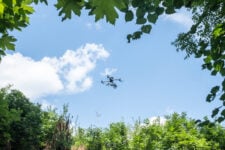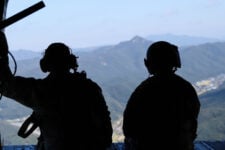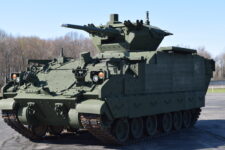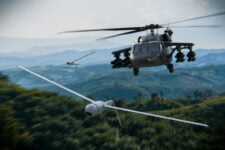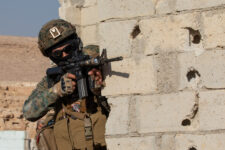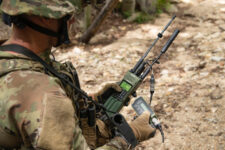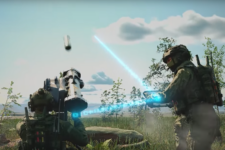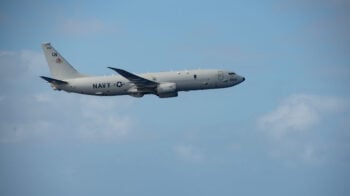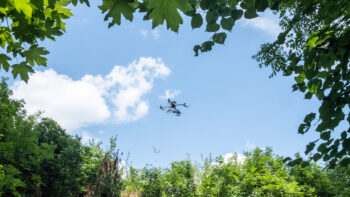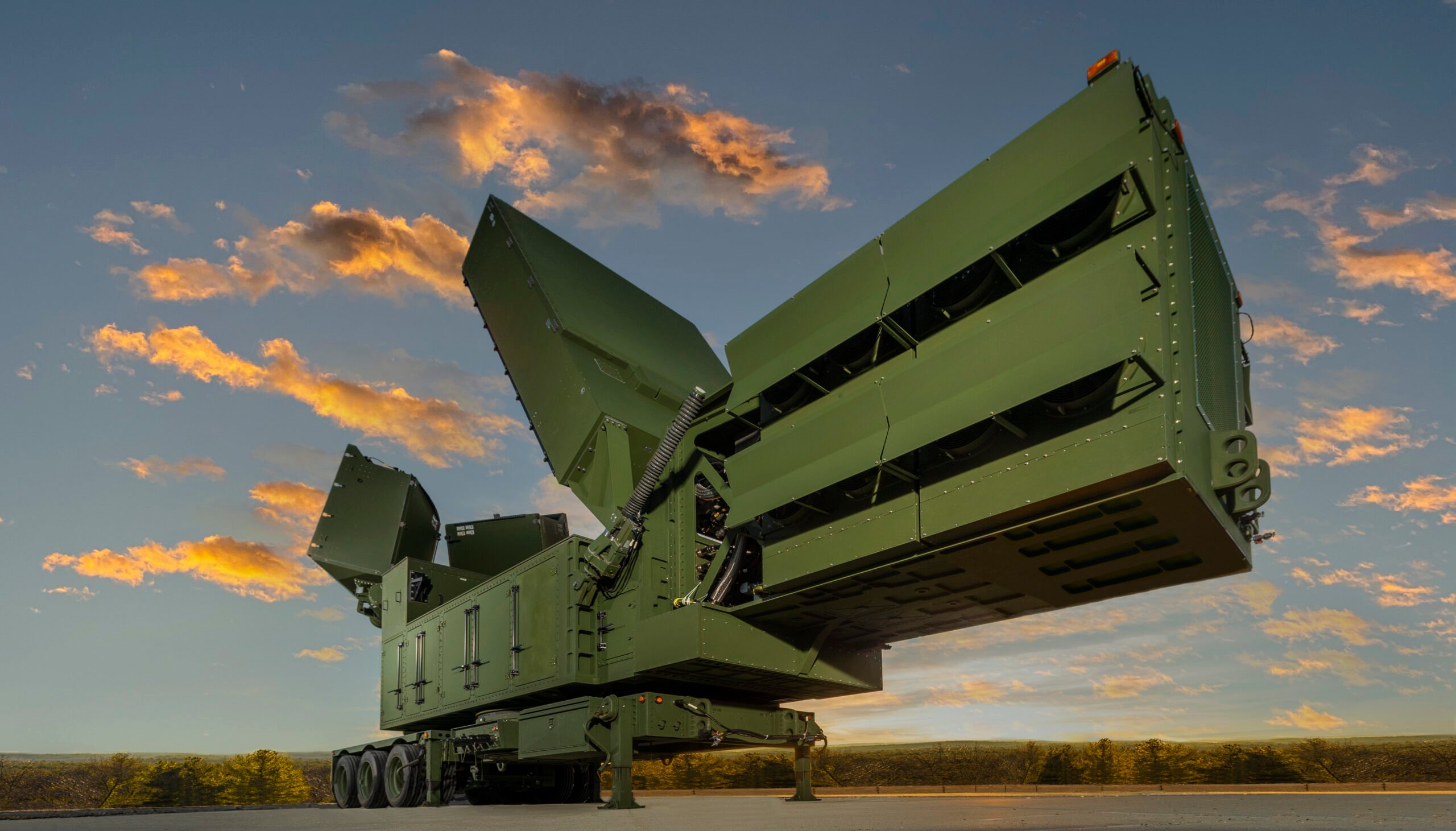
The Army’s LTAMDS radar can track and identify the full range of threats – drones, cruise missiles, ballistic missiles, even hypersonics – simultaneously. (Photo courtesy of Raytheon)
Nowhere is the motto “Nothing goes unseen” as much in evidence as in Raytheon’s LTAMDS, the US Army’s Lower Tier Air and Missile Defense Sensor. Designed to defend against escalating air and missile threats, the transformational, three-array radar can search, track, classify, and discriminate threats simultaneously across a 360-degree range of attack.
In this Q&A with Raytheon’s Tom Laliberty, president of Land & Air Defense Systems, and Bob Kelley, director for US Requirements and Capabilities, we discuss the evolving landscape of air defense and examine Raytheon’s rapid development program and recent contractor verification milestone for LTAMDS.
Breaking Defense: What are the threats LTAMDS is designed to counter, especially in the context of what’s been seen in Ukraine.

Raytheon’s Tom Laliberty, president of Land & Air Defense Systems.
Laliberty: LTAMDS is designed to defend against very complex and highly coordinated attack scenarios. The threat set hasn’t necessarily changed, but the complexity has been reinforced by what we’re seeing in Ukraine. Today’s battlefield is no longer linear. Adversaries are using drones in very high numbers, and using high-speed cruise missiles and ballistic missiles, all coming from different directions simultaneously in an attempt to overwhelm air defenses.
It takes tremendously more range and capacity to manage more objects in the air – and that’s where LTAMDS brings an advantage.
Kelley: There’s a wide span where a sectored radar could be threatened by anything outside of a sectored search. That’s why multiple radars are emplaced, targeting the direction of anticipated threats. But as Tom mentioned, we see the threat environment expanding. For instance, Ukraine is threatened not only from Russia proper, but also from the Black Sea where you could potentially even have submarine-launched missiles.
LTAMDS brings 360-degree threat detection. It’s like three radars in one. It’s an all-digital AESA radar, powered by Raytheon-manufactured GaN technology that makes the radar extremely efficient, with strong power output – delivering the longer range, increased capacity and higher resolution. This makes LTAMDS incredibly capable to track and identify the full range of threats – drones, cruise missiles, ballistic missiles, even hypersonics – simultaneously.
Breaking Defense: How does LTAMDS fit into the Army’s air and missile defense architecture?
Kelley: The radar itself is designed to work as a native system to the Army’s IBCS (Integrated Battle Command System) architecture. It supports the current family of Patriot missiles, the PAC-3 MSE (Missile Segment Enhancement) and the PAC-2 interceptors. We realize that the Army will likely have new interceptors in the future, and we’ve postured the radar to support those, as well.
Breaking Defense: Bring us up to date on the development and testing of the six LTAMDS radars under contract with the Army.

Raytheon’s Bob Kelley, director for US Requirements and Capabilities.
Kelley: This is a rapid prototyping program. We’re advancing the radar toward an operational capability in December of 2023, which is, in essence, four years since contract award. We currently have all six 360-degree radars under that initial 2019 contract complete.
They’ve been in simultaneous, parallel testing and integration over the past 8 to 10 months. This is actually quite unique for a development program, having multiple systems rotating through integration and test in parallel. Most recently, one was going through developmental testing at Aberdeen Proving Grounds, another at Pax River, and still another going through contractor verification testing at White Sands Missile Range.
We also had two radars going through integration in the northeast, and this was all happening simultaneously. Typically, those kinds of tests would be done in serial when you only have one test asset, but we were fortunate to have six, all advancing through test.
Breaking Defense: How is LTAMDS progressing through the contractor verification process?
Kelley: We recently completed this key milestone; it’s been very successful. During the event, LTAMDS was put through its paces and met all defined requirements. We completed 11 missions against real and simulated threats in operationally relevant environments. The radar demonstrated search and track, direct missile communication – sending and receiving data, and even completed a simulated PAC-3 engagement.
Laliberty: The strong performance of LTAMDS at this stage of testing is a critical milestone on the path to achieving an operational capability level by the end of this year. This was our first opportunity to show what this radar can do, and it did not disappoint.
Breaking Defense: At the recently concluded International Defence Industry Exhibition (MSPO) in Poland, the Minister of Defence signed a letter of acceptance as the first international customer for LTAMDS. Let’s talk about that.
Laliberty: The LOA signing at MSPO is for 12 LTAMDS radars. This represents the second phase of WISLA – the Polish name for their air defense program. The first phase centered around Patriot, and that’s gone extremely well. We’ve delivered all the equipment to Poland under that first phase.
With the introduction of LTAMDS, Poland becomes the first allied country to complement the combat-proven Patriot with the significant improvements that LTAMDS provides.
In addition to Poland, we have on the order of a dozen other countries that have had formal interaction with the US government, either with technical briefs, classified defense design briefs, or pricing and availability requests for LTAMDS. Demand and interest for the program is extremely high from the international partners.
Much of the interest for the system is to integrate it with Patriot. A lot of these countries have a large investment in Patriot capability. Many want to preserve that investment and integrate LTAMDS into their Patriot systems. We’ve identified a set of design changes for Patriot that enable use of LTAMDS with Patriot.
Breaking Defense: What’s next for LTAMDS?
Kelley: With the successful Contractor Verification Testing now complete, additional events will continue throughout 2023, including ongoing user training and soldier-conducted operational assessment, culminating with an operational capability readiness level by year end.
As we go into 2024, there will be more rigorous testing, including expanded, system-of-systems testing. There will be a lot more rigorous testing with IBCS, which will lead to a full operational capability in 2024.
Breaking Defense: Final thoughts?
Laliberty: If I could characterize LTAMDS as more than a radar, it’s an air defense capability. It really is a transformational radar, capable of addressing a transformational threat environment.
What we’re going to deliver is the culmination of a tremendous amount of engineering innovation, technical expertise, and strong program management. It is a testament to a strong working partnership with the US Army. It’s probably unprecedented that a radar of this complexity can go from inception to an operational capability in the span of four years.
Kelley: I echo Tom’s comments. LTAMDS is an exceptional radar. It will provide air defenders around the world with 360-degree threat overmatch. And with our continued progress, we’re bringing this much needed capability ever closer to the battlefield.
